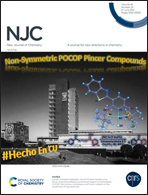Agricultural waste buckwheat husk derived bifunctional nitrogen, sulfur and oxygen-co-doped porous carbon for symmetric supercapacitors and capacitive deionization†
Abstract
In electric double layer capacitors (EDLCs), the capacitance is produced by the electrostatic charge separation at the interface between the electrode and the electrolyte. Capacitive deionization (CDI) is a novel desalination technique which shares a similar working principle with EDLCs. Due to their similar working principles, highly efficient electrode materials for EDLCs and CDI have many similarities. In this report, N,S,O-co-doped porous carbon (NSO-PC) were prepared and used as bifunctional materials for EDLCs and CDI using buckwheat husk as a precursor and thiourea as a dopant. The double-edged sword effect of heteroatom doping was discussed in detail. When the ratio of thiourea to buckwheat husk was 2 : 1, the proposed NSO-PC exhibited high surface area, an interconnected micro–mesoporous structure, good EDLCs performance and could be used for constructing a symmetric supercapacitor. The symmetric supercapacitor could be used as an energy storage device for an LED array. The NSO-PC also displayed high electrosorption capacity (12.7 mg g−1 at 1.2 V in 500 mg L−1 NaCl solution), high charge efficiency (higher than 0.9) and good desalination–regeneration performance (the electrosorption capacity retention was 96% after 30 cycles) in CDI application. This study provides a bright way to develop bifunctional electrodes from agricultural waste for symmetric supercapacitors and CDI.



 Please wait while we load your content...
Please wait while we load your content...